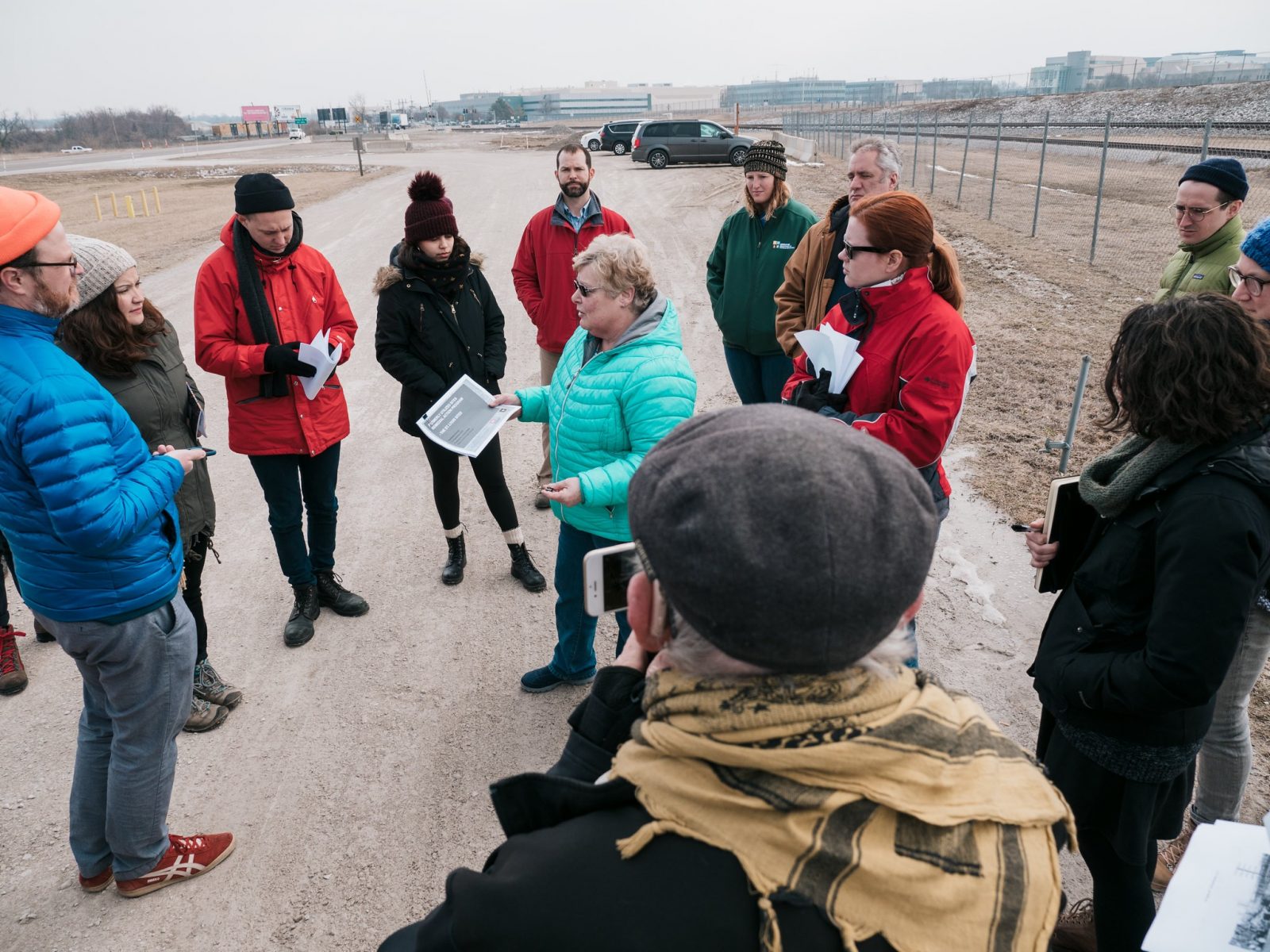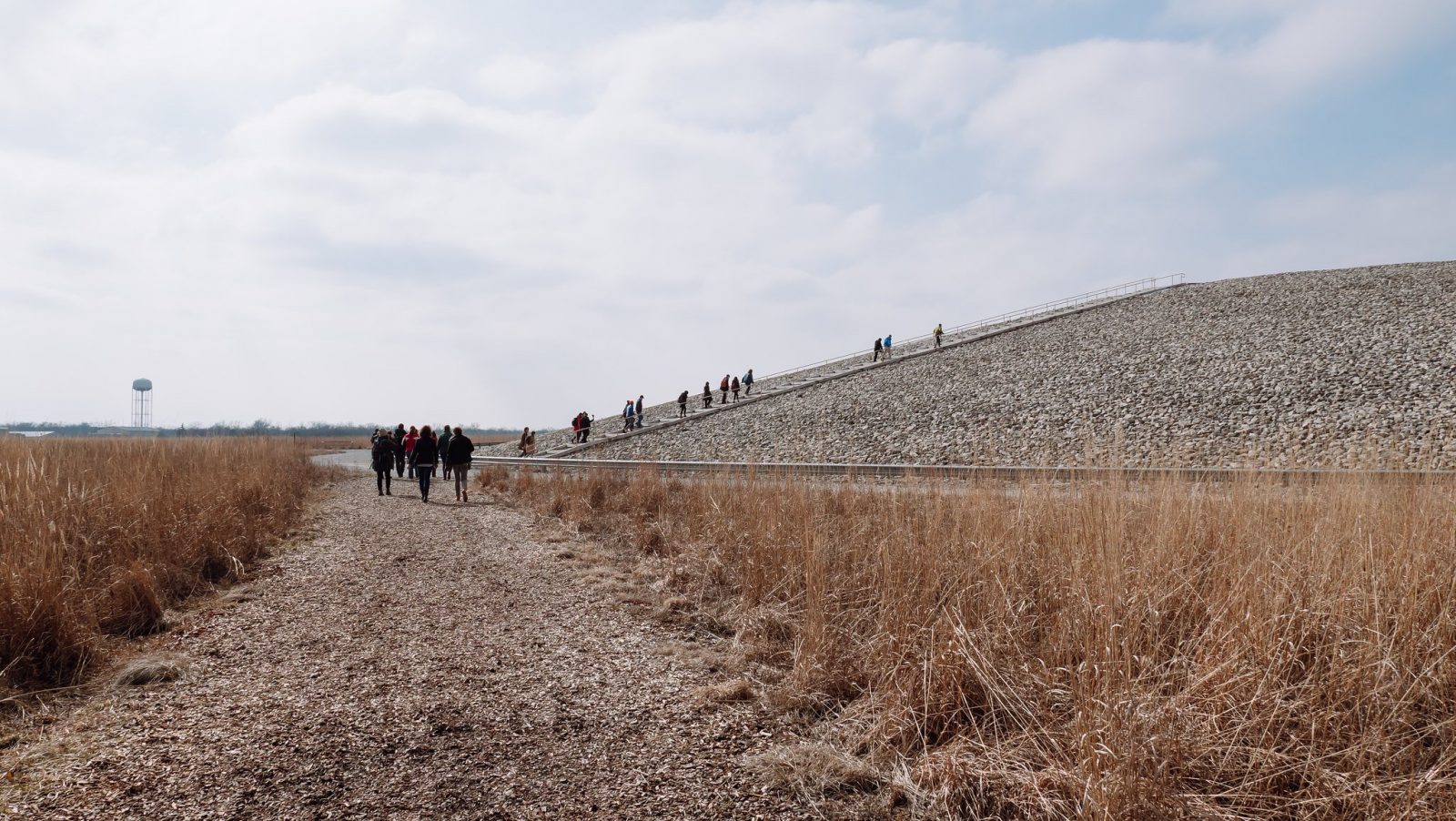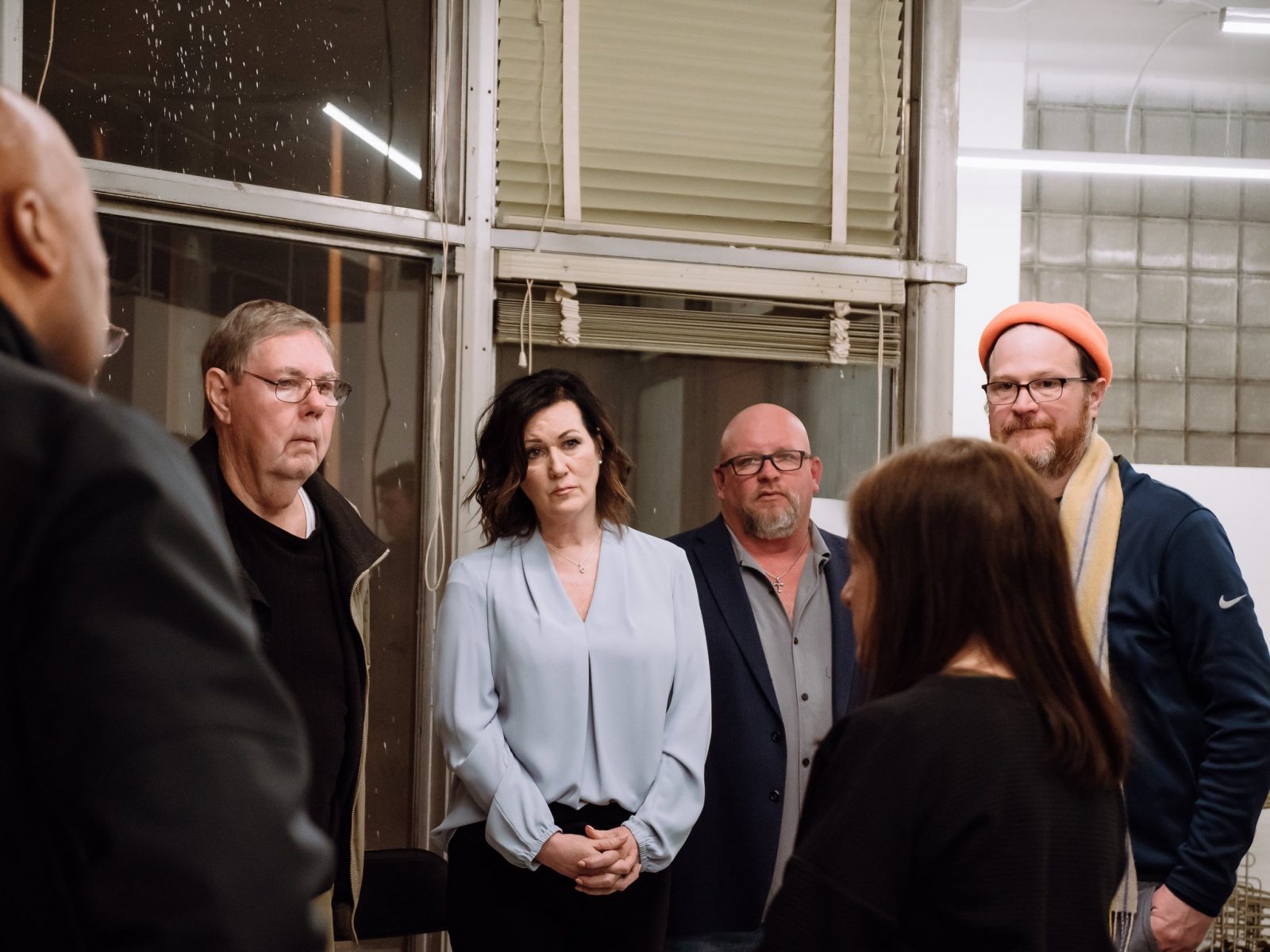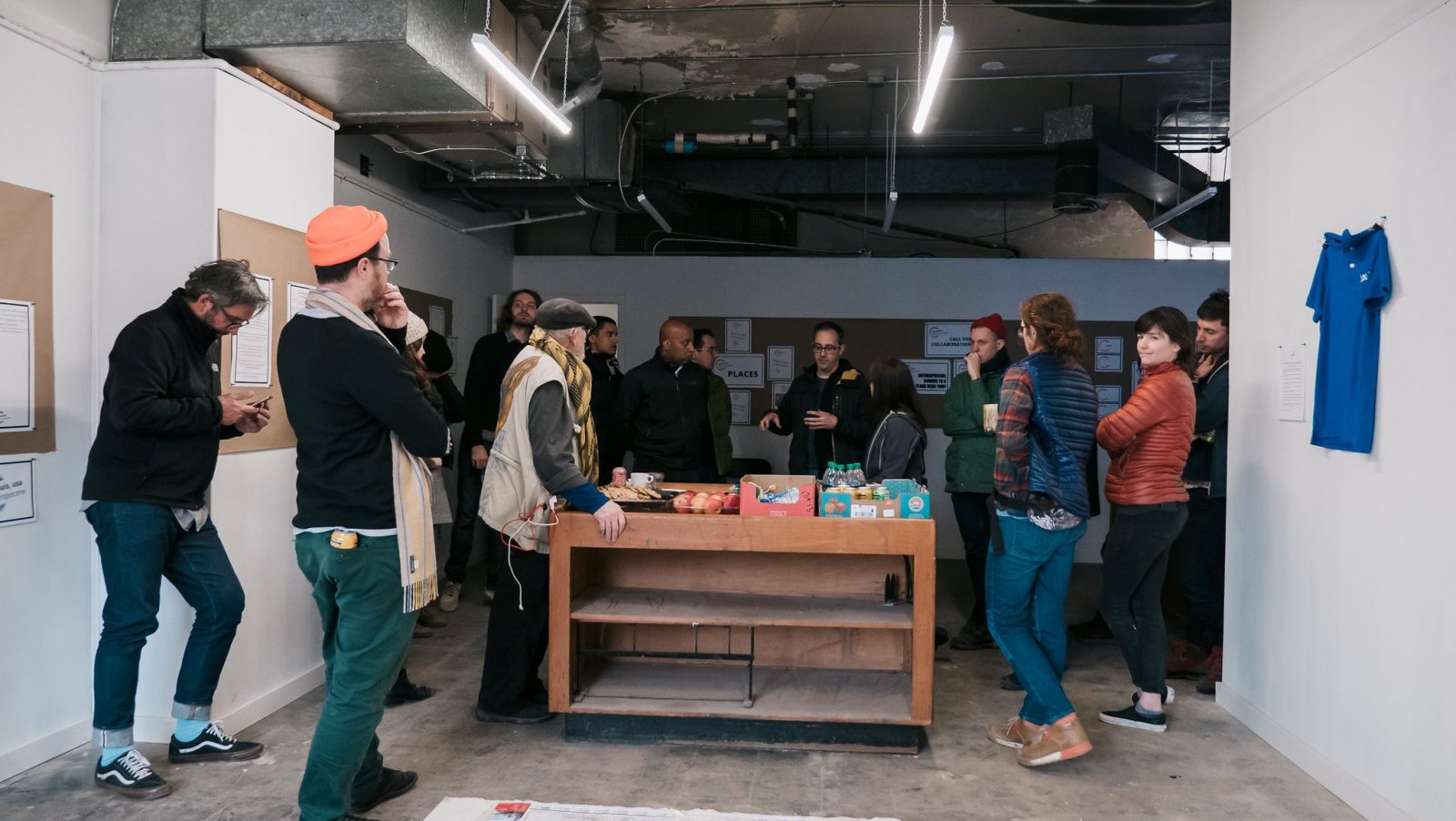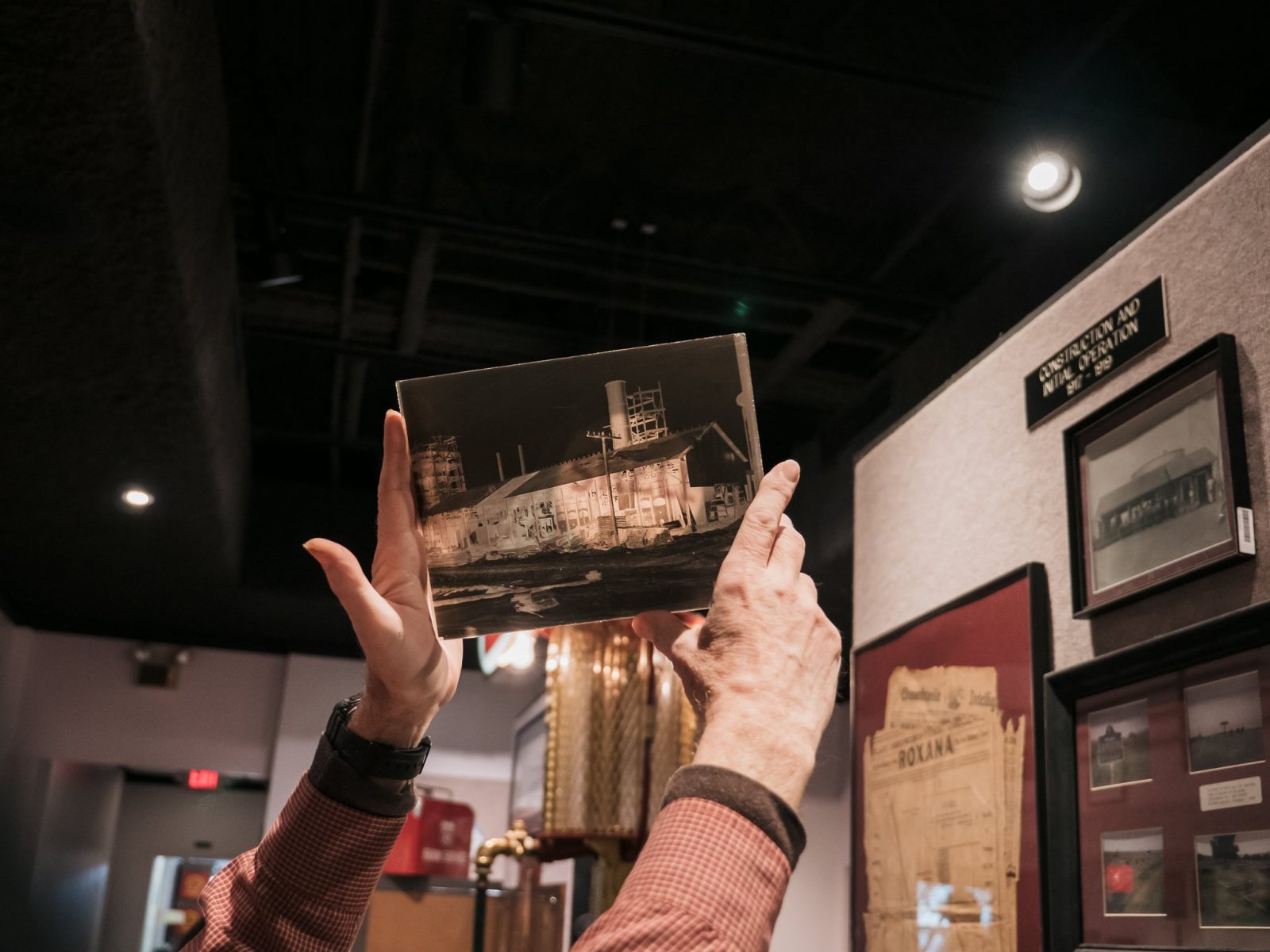Tactics for Quotidian Anthropocenes: A Field Campus Report
The St. Louis Anthropocene Field Campus (March 7–10, 2019) engaged with St. Louis, Missouri, as an anthropocenic site, aiming to create situated, place-based perspectives of the Anthropocene, while also building new modes of collective knowledge-production and action. The field campus is part of the River School, a collaborative enterprise within the project Mississippi. An Anthropocene River.

Over a total of four days (see agenda), participants learned from representatives of the St. Louis region about local tactics, findings, and visions for drawing out the many scales (nano to macro). In addition to this, they learned of the types of systems (ecological, social, cultural, political, economic, technological, and atmospheric), all of which together produce what the social theorists Eli Elinoff and Tyson Vaughan have termed “quotidian anthropocenes.”
Together, field campus participants drew out comparisons with other sites and asked interdisciplinary questions, such as: How have the environmental issues particular to St. Louis been documented, analyzed, and described thus far, and how have these practices paved the way for further work now? How can “the Anthropocene” – and particularly local, quotidian anthropocenes – be measured usefully, narrated, and visualized? What kinds of civic institutions are needed to develop, share, and archive anthropocenic research in different places?
Our experience of the field school speaks to the potential for locally grounded, place-based undertakings, in order to generate new modes of engagement with the Anthropocene. In particular, the field campus was an opportunity to experiment with structured and unstructured collaborative field notes, grounded engagements with the landscape, local and “foreign” collaboration, community environmental disaster archiving, and new modes of expression and representation.
Collaborative Field Notes: Structured and Unstructured
Our project was organized around a shared set of twelve questions, which were to be addressed through a series of field campuses, in ongoing online meetings called the Open, and a lively Archive project. Field campuses are experiments in collaborative field research, a method in which local people partner with outsiders to draw out a particular quotidian Anthropocene (e.g. in St. Louis, Austin, Utah, Lisbon, Seoul, or Hyderabad). The Disaster-STS Network platform facilitates the collaboration and archives it. Participants are also encouraged to develop and work on themes that cut across sites, such as energy transition or civic data infrastructure.
Our St. Louis Field Campus was driven by questions such as: How has the Mississippi region been documented, analyzed, and described thus far, and how have these practices paved the way for further work now? How can “the Anthropocene” – and particularly local, quotidian anthropocenes – be measured usefully, narrated, and visualized? What kinds of civic institutions are needed to develop, share, and archive Anthropocene research in different places?
As a new mode of scholarly engagement and adult education, we imagined the Open Seminar and Field School in the tradition of popular education and participatory research projects of the past, such as those run by the Student Nonviolent Coordinating Committee (SNCC), the Highlander Research and Education Center, and Paulo Freire. In the weeks leading up to the field campus, participants became more familiar with the work of their peers through online meetings. For one of our sessions, we encouraged participants to watch the documentary The Safe Side of The Fence and to conduct an online group interview with the film’s director, Tony West.
The field campus group walking up the incline of the Weldon Springs Containment Cell. by Tim Schuetz
Grounded Engagements with the Landscape
The St. Louis Field Campus also offered the opportunity for on-the-ground engagement with sites associated with the nuclear and petrochemical industries in St. Louis. Visiting these sites, we saw how a range of public and private actors manage them, how locals interact with them, and how they function as civic infrastructures that shape public discourse around issues such as radioactive exposure and environmental health.
On the first day of the field campus, we visited the St. Louis Airport Project Site (SLAPS). Here, we met with project managers from the U.S. Army Corps of Engineers, who currently are removing residual waste from the Mallinckrodt Chemical Company’s uranium refining over the course of the 1940s and 1950s in St. Louis. Our discussion at SLAPS was centered on the goals and the frustrations of the remediation process – a process which, already over-schedule, will likely continue for several more years.
We also visited the Weldon Spring Containment Cell at St. Charles, Missouri. At the height of the nuclear arms race during the Cold War in the 1950s, Mallinckrodt Chemical Company relocated uranium production from downtown St. Louis to a new refinery in St. Charles. Following the plant’s closure, a conversion turned the site into a 42-acre containment cell designed to contain 1.5 million cubic yards of radioactive material for 1,000 years. At the Weldon Springs Interpretive Center, museum guides taught us about their methods for informing the public about the legacy of the uranium industry and nuclear waste in the St. Louis region.
Professors Kim Fortun and Scott G. Knowles talking to Denise Brock and retired Weldon Springs’ workers. by Tim Schütz
Bringing Locals and Outsiders Together
During the field campus, we also heard from locals in St. Louis about their own methods of documenting, analyzing, and describing environmental issues in the region. In a discussion moderated by Tony West, director of The Safe Side of the Fence, we met with Brian Zink, an attorney at Atomic Weapons Employee Consultants; Wendy Verhoff, a historian of radioactive waste in St. Louis; and Denise Brock, Ombudsman to the National Institute for Occupational Safety and Health (NIOSH).
The discussion centered on the legacy of uranium refining in the city, and the more than 500,000 nuclear workers who have since developed exposure-related illnesses. Much of the talk focused on Denise Brock’s key role in implementation of the procedures of the Energy Employees Occupational Illness Compensation Program Act (EEOICPA). This legislation ensures that both compensation and payment of medical expenses are available to the workers and their families who have developed illnesses due to exposure to radioactive substances at certain nuclear facilities.
This was an opportunity not just to hear from St. Louis locals, but also to think about how issues such as radioactive exposure tie together different sites and actors across the globe. During the discussion, participant Guilberly Louissaint asked a provocative question about whether we can speak of a global nuclear victimhood, which includes workers in St. Louis, indigenous Canadian and Congolese uranium miners, as well as victims of the atomic bombings of Japan.
Experimenting with Different Modes of Expression and Representation: Community Archiving Project
A key aim of the St. Louis Field Campus was to experiment with different modes of scholarly and artistic expression, and to develop a set of tactics that participants could take back into their own field sites. For this, on the one hand, we invited Yanni Loukissas and Emily Catedral of the St. Louis Map Room, who engaged us in a community-mapping project. On the other, the artists involved in the campus brought with them their rich experience with materials and forms, of which we had learned previously in both the technical applications and in the online meetings that took place before the campus. In addition to mapping, we decided to focus on different forms of communicative expression: photography, film, podcast, drawing, and walking tours. Participants had a chance to sign up for groups according to their own interests.
However, we also envisioned the field campus as a tactic in and of itself, as a way to engage participants in new forms of documentation or rogue archiving“,” a method attuned to the demands of anthropocenics. We visited two local history museums, the Wood River Refinery History Museum, located on the grounds of the refinery itself, and the Wood River Museumlocated in Wood River, Illinois. In the Refinery Museum, we interviewed the curators, who themselves had worked at the plant, and we discussed the challenges of safeguarding the history (with all of its complexities) to ensure it remained alive and vital. We also visited the Lewis and Clark State Historic Site, near the convergence of the Mississippi and Missouri rivers. Here we encountered a much more formal public museum, but also one that struggles to place the history of American exploration within the broader context of struggles over resources, racial and Indigenous violence, and the meta-narratives of the American Empire. Our discussions, here, with the staff and guides were lively, and opened up new ways of considering the possibilities for localized Anthropocene archives.
Though we welcomed making use of the Disaster-STS Network platform’s capacity for collaboration, we also wanted to allow for the local means of documentation and presentation. For this, we prepared a final exhibition at Granite City Art and Design District (G-CADD), where we installed each group’s project. These included a film and photo essay, which we projected on to the wall; a range of short podcasts; imaginary “Anthropocene Tours”; and a large-scale map that documented the St. Louis Anthropocene Field Campus. We also provided a large-format poster for each of the twelve questions we were asking, so that participants were able to contribute their insights in a semi-structured way. The research findings and artistic contributions were deliberately provisional, but they serve as a model for future field campuses as a way to connect analogue practices with the digital archive.
Finally, this engagement will continue through a series of online meetings, called the Open Seminar. In bi-monthly meetings, we will discuss and prepare for the next campus, the New Orleans Anthropocene Field Campus, which will take place immediately before the annual meeting of the Society for Social Studies of Science (4S). The seminars are open to anybody who is interested in attending.
